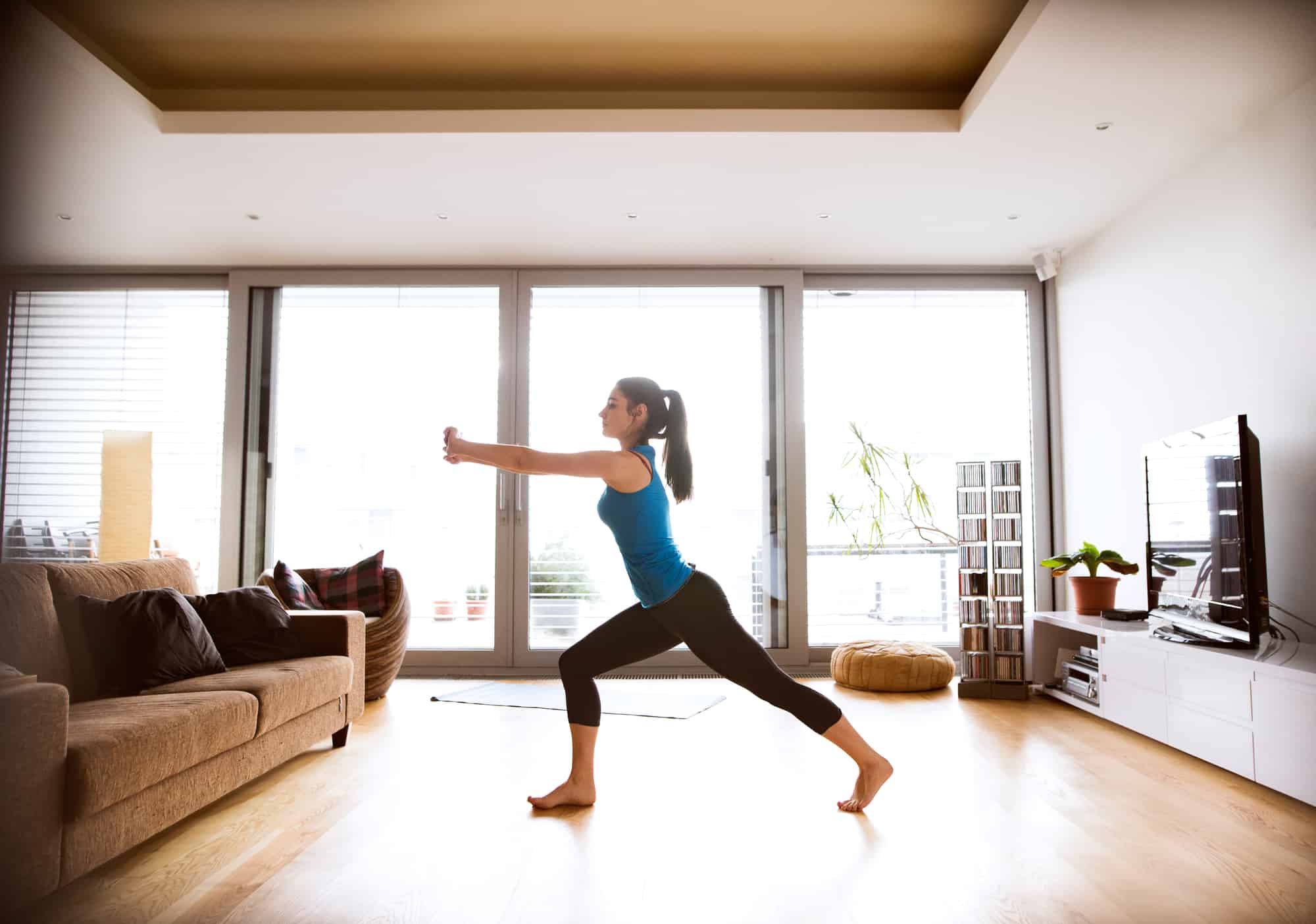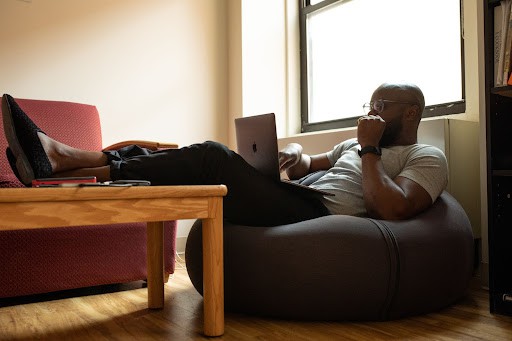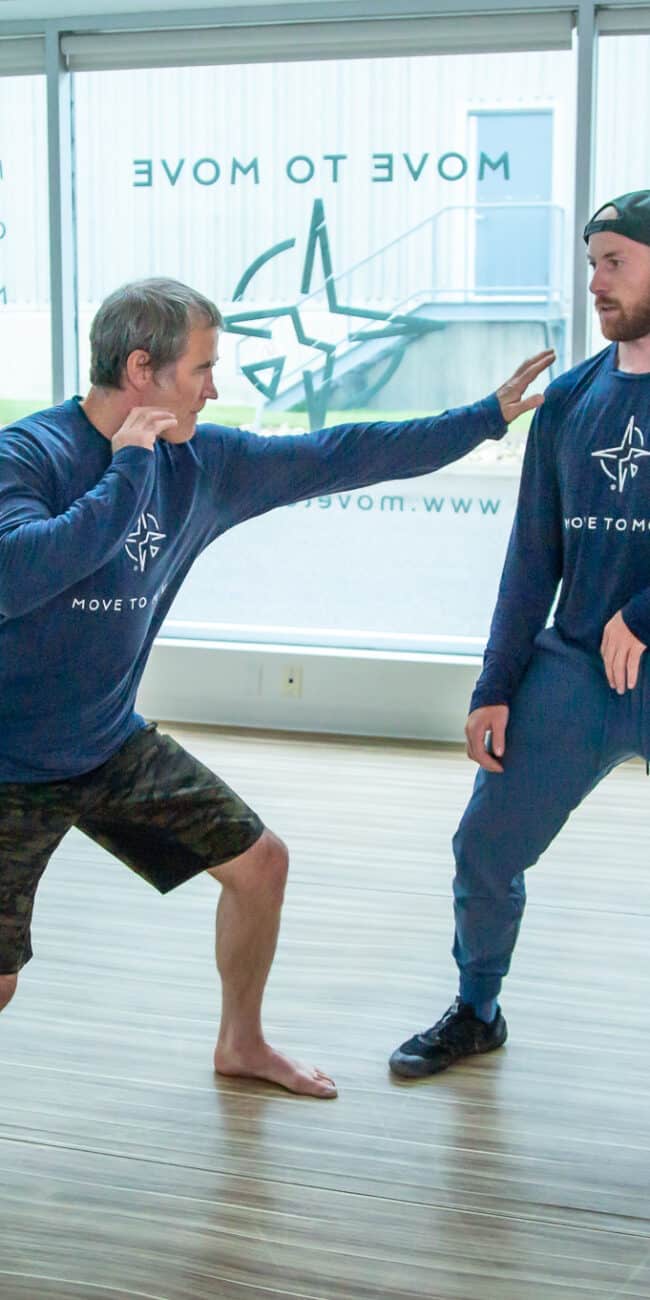
Easy Exercises to Keep Your Work-from-Home Body Healthy
There are many advantages to working from home—like saving time and money on your commute, having the freedom to set up your own space for maximum productivity, and using your own bathroom. But working remotely can also lead to a less active lifestyle. If you’re not careful, you could find yourself taking root in your office chair or spending so much time in bed that NASA might as well study you to learn about the physical effects of cryogenic sleep on astronauts during long-distance space travel.
Rest and relaxation is good for the body, but being sedentary isn’t—in fact, it’s linked to a 71% increase in mortality rates for adults. Fortunately, even a moderate amount of regular exercise is enough to offset these effects, and today we’re going to share some of our favourite exercises for staying healthy while you work from home (you don’t need a movement studio to enjoy these moves!). Take some movement tips from the pros and find out how you can be better to your body on a daily basis.

Via Pexels
How Office Work Affects Our Health
That stat above is pretty scary—but why is sitting for hours a day so bad for you? The answer is actually pretty straightforward. When you aren’t moving, the following things happen:
- Your body burns calories at a slower rate than when you’re performing physical activities.
- The lack of loading stimulus on your bones causes them to thin more acutely as you age.
- Since you aren’t using your muscles, they begin to atrophy more quickly than when you’re active.
The consequences? We’re glad you asked. Living without regular physical activity significantly increases your risk of:
- Heart disease
- Diabetes
- Obesity
- Colon cancer
- High blood pressure
- Osteoporosis
- Lipid disorders
- Depression
- Anxiety
So, to make a long story short, not exercising is really bad for you. But how you can tell when you’re not getting enough activity?
The Symptoms of a Sedentary Lifestyle
Fortunately, your body gives you some pretty clear warning signs when you start to neglect physical activity for long enough. Look for the following signs to let you know when it’s time to get active:
Constant Fatigue
Feeling sluggish throughout large portions of the day is a pretty clear tell that you aren’t moving your body enough. When we’re engaged in tasks that require physical energy, our brains produce endorphins to reward us. Without that endorphin rush, it’s easy to feel fatigued (as well as depressed or anxious).
Poor Sleep Quality
Moderate exercise leads to increases in sleep quality—just 30 minutes of medium aerobic exercise on a daily basis is enough to show meaningful results. When people aren’t exercising, on the other hand, they don’t get as much slow wave (i.e. deep) sleep, which leaves them feeling less rested upon waking.
Gaining Weight
The math is pretty simple on this one: consume more calories than you burn, and you’ll notice yourself putting on pounds. Even just two weeks of reduced physical activity can cause noticeable weight gain—and it can cause your metabolism to slow down as well.
Joint Stiffness
Regular activity improves the flexibility, endurance, and strength of your joints. When you’re not moving for long periods of time, the ligaments, small muscles, and other soft tissues around your joints settle and become less limber.
Brain Fog
Research shows that regular exercise improves your memory and critical thinking skills. Going for long periods without physical activity has the opposite effect—you might find yourself struggling to remember things, focus, or problem solve.
Other Consequences of Not Moving
Lack of physical activity has been linked to numerous other issues—including low mood, digestion problems, bad posture, and even reduced skin quality. But the exercises below focus on helping you feel more comfortable in your own body and confident in your ability to move it.
7 Easy Exercises to Keep You Limber & Pain-Free

Via Pexels
Walking
There’s a reason step-counters are so popular these days—turns out walking is great for you. Not only does it keep your joints from getting stiff, but it also places low-impact loads on your bones, which helps prevent the bone thinning we mentioned earlier. Walking also burns calories—at a rate of 210–360 per hour for most people.
Hanging
The effects of prolonged sitting can be devastating to your shoulders, including loss of range, strength, frozen shoulder, pain, and many other issues. One of the ways to combat this is to take on a practice of hanging on a regular basis. We define hanging as a form of suspension that includes straight arms. Opportunities to hang can be found in many places around home, including door frames, pull-up bars, playgrounds, tree limbs, and more.
Here is a good Challenge: accumulate a total of 7 minutes a day of various hanging options for 30 days. If you are not able to hang completely free, it is perfectly fine to support some weight with your feet to build up capacity. You don’t need to get 7 minutes in one go, just accumulate the time throughout the day. The key is variability, hang from various supports, with various hand positions, but keep consistent, getting in 7 minutes a day.
Ido Portal has written a very in-depth article on the benefits of hanging, including practical options for all abilities https://www.idoportal.com/blog/hanging/
The passive hang: https://youtu.be/iIVg_KK_Uzs
The active hang: https://youtu.be/HoE-C85ZlCE
Swimming
Swimming is terrific for improving muscle strength and burning calories, since the resistance created by the water surrounding your body means your muscles are working extra hard every time you move.
Pool jogging is one excellent way to build strength and get a cardio workout if you have access to a swimming pool. Stand in waist- or chest-deep water and run forward for about 20 steps, then backwards to where you started. This will work out the muscles you use when walking or running on dry land, but in a way that prevents you from putting heavy stress on your joints. As such, it can be particularly useful for people with arthritis or those who are recovering from knee and hip injuries.
Stretching
Specific stretches for your shoulders, back, and hips can help eliminate tension from places that tend to become cramped while seated behind a desk for hours. Try the following:
Hips
When we sit for prolonged periods our hip flexors tend to shorten, often causing lower back pain and the inability to stand tall. Here are a couple drills you can do daily to create space in your hip joint and combat those tight flexors.
Hip CARs: In this version Stand on one leg, and support yourself using a wall, counter, or a stick and then follow the pathway shown in the video, taking care to avoid moving in other areas of the body.. Perform 3 to 5 circles in each direction. https://youtu.be/BLTu5ETeT_E
Hip Extension PAILS and RAILS: After cars a great way to clear up some space in your hips is with Isometrics. Research on Isometrics have shown them to be one of the most effective and safe ways to gain range of motion and strength, providing lasting results. https://youtu.be/hkiT3TFeKn8 Via Active Health Spine and Support
Shoulders
Take a break from your work and work through these two movements to keep those shoulders healthy and flexible.
Shoulder CARS: https://youtu.be/69g7cJ1Cxuk
Scapular CARS: https://youtu.be/PRs31Lraur4
Spine
The spine is the organiser of the body and often overlooked in fitness programs. As we can’t see our spine we don’t pay much attention to it until it causes us pain. Here are some good drills that will help you connect with your spine, gaining better control and function in this critical area. The key for this work is to be consistent, spending 5-10 minutes daily on targeted spine work will give remarkable results over time.
Segmented CAT/COW: As opposed to global movement of the spine it is important to be able to move specific segments. This drill will help with this, and if you have a partner to provide tactile cues, walking their fingers up your spine so you feel where you should move you will gain even more benefit. https://youtu.be/TOFvD6KyTSo
Ido Portal’s Spinal Wave: Stand facing the wall, and lightly touch each of the following to the wall, lifting the last point of contact so you are only touching one area at a time. Nose, Chin, Chest, Bottom of Ribcage, Belly, Pelvis. When you reach the pelvis, start again at the nose and continue. When you have gained good control and smoothness, (this can take a few weeks of consistent work) you can move away from the wall and continue with the wave as shown in the video. https://youtu.be/cmLfiWfyGI0
Give Your Body a Break
Working from home might feel more relaxing in many ways—but it can still put strain on our bodies in ways we don’t always notice. Use what you’ve learned above to start treating your body more kindly, and contact us to learn more about the benefits of regular movement.
Optimize Your Wellness with Professional Assistance
While the exercises mentioned above are excellent for self-care, sometimes our bodies need specialized attention to truly thrive.
Chiropractic Care: Aligning your spine and joints can make a world of difference in how you feel day-to-day. Discover our chiropractic services and how they can benefit you.
Massage Therapy: Beyond relaxation, massages play a pivotal role in muscle recovery and tension release. Learn more about our massage services and book an appointment.
Physiotherapy: If you’re experiencing specific pains or mobility issues, physiotherapy might be the solution. Explore our physiotherapy offerings and get started on your recovery journey.
Bonar McCallum
Bonar shares his passion for movement by teaching classes, and mentoring other Move to Move teachers. He is still an avid climber, he feels a strong connection to special places in the Bow Valley where he has spent countless hours climbing, exploring and developing new routes.






